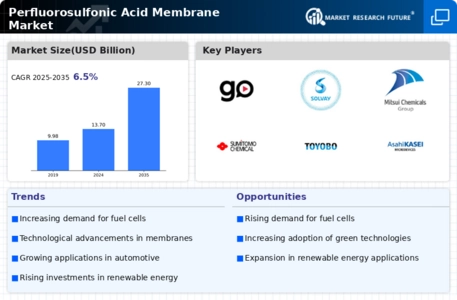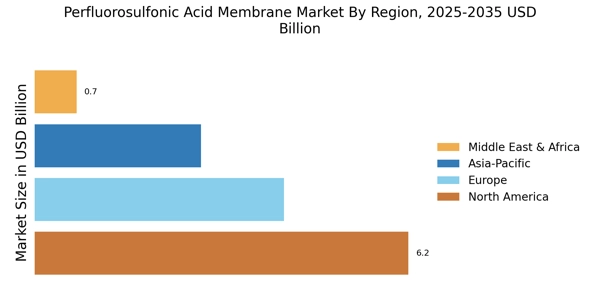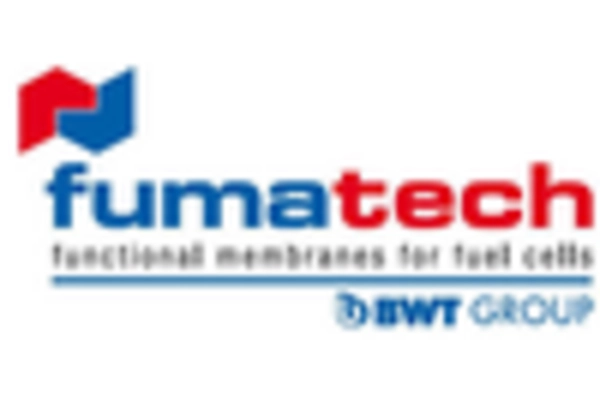Growing Demand for Portable Power Solutions
The Perfluorosulfonic Acid Membrane Market is witnessing a growing demand for portable power solutions, particularly in consumer electronics and military applications. The lightweight and high energy density characteristics of fuel cells utilizing perfluorosulfonic acid membranes make them ideal for portable devices. As the market for portable power solutions expands, driven by the increasing reliance on mobile technology, the demand for these membranes is expected to rise. Analysts project that the portable power market could reach USD 10 billion by 2027, indicating a substantial opportunity for the perfluorosulfonic acid membrane sector.
Expansion of Renewable Energy Infrastructure
The Perfluorosulfonic Acid Membrane Market is poised for growth due to the expansion of renewable energy infrastructure. As countries invest in solar, wind, and hydrogen energy, the need for efficient energy storage and conversion technologies becomes paramount. Perfluorosulfonic acid membranes play a critical role in hydrogen fuel cells, which are integral to the renewable energy landscape. The International Energy Agency has reported that hydrogen production could reach 180 million tons by 2030, further underscoring the potential for perfluorosulfonic acid membranes in this sector. This expansion not only supports energy transition goals but also enhances the market's prospects.
Increasing Adoption of Fuel Cell Technologies
The Perfluorosulfonic Acid Membrane Market is experiencing a notable surge in the adoption of fuel cell technologies across various sectors, including transportation and stationary power generation. This trend is driven by the growing emphasis on reducing carbon emissions and enhancing energy efficiency. Fuel cells, which utilize perfluorosulfonic acid membranes, are recognized for their high performance and durability. According to recent estimates, the fuel cell market is projected to reach USD 30 billion by 2026, indicating a robust growth trajectory. As industries seek cleaner alternatives to traditional energy sources, the demand for perfluorosulfonic acid membranes is likely to increase, thereby propelling the market forward.
Rising Investment in Research and Development
The Perfluorosulfonic Acid Membrane Market is benefiting from increased investment in research and development activities. Companies are focusing on enhancing membrane performance, durability, and cost-effectiveness to meet the evolving demands of various applications. This investment is crucial as it leads to innovations that can improve the efficiency of fuel cells and other electrochemical devices. Recent reports indicate that R&D spending in the energy sector is expected to grow by 5% annually, which could significantly impact the development of perfluorosulfonic acid membranes. As advancements continue, the market is likely to see a proliferation of new products and technologies.
Environmental Regulations and Sustainability Initiatives
The Perfluorosulfonic Acid Membrane Market is influenced by stringent environmental regulations and sustainability initiatives. Governments worldwide are implementing policies aimed at reducing greenhouse gas emissions and promoting clean energy technologies. These regulations create a favorable environment for the adoption of fuel cells and other technologies that utilize perfluorosulfonic acid membranes. As industries strive to comply with these regulations, the demand for efficient and sustainable energy solutions is likely to increase. The market is expected to benefit from these initiatives, as companies seek to align their operations with environmental standards and consumer expectations.


















Leave a Comment